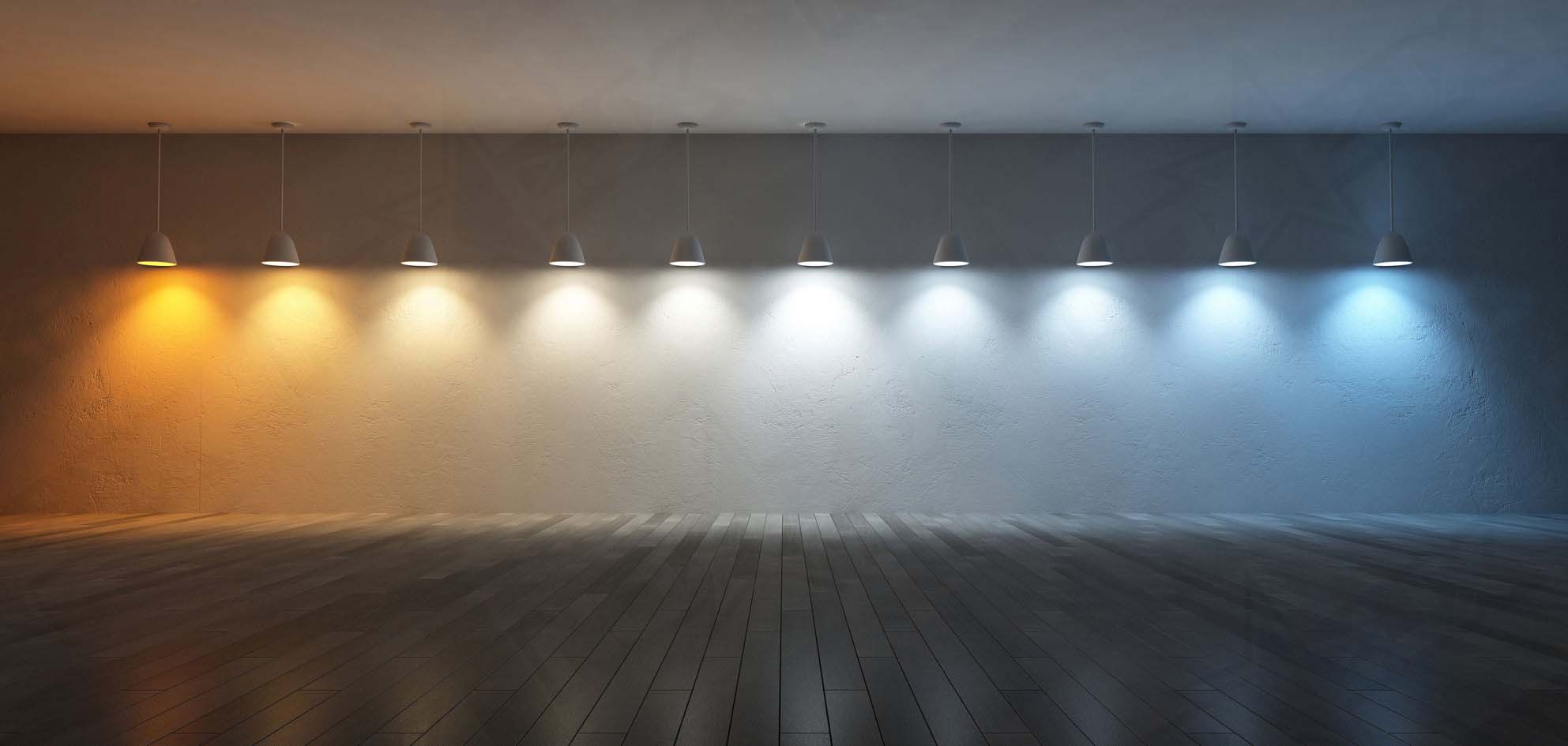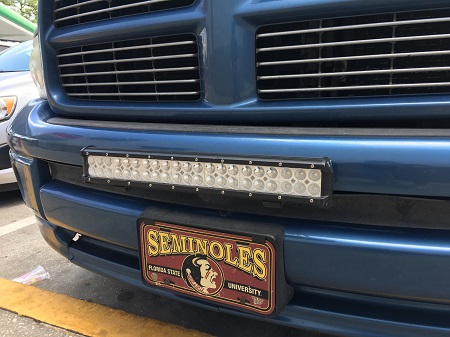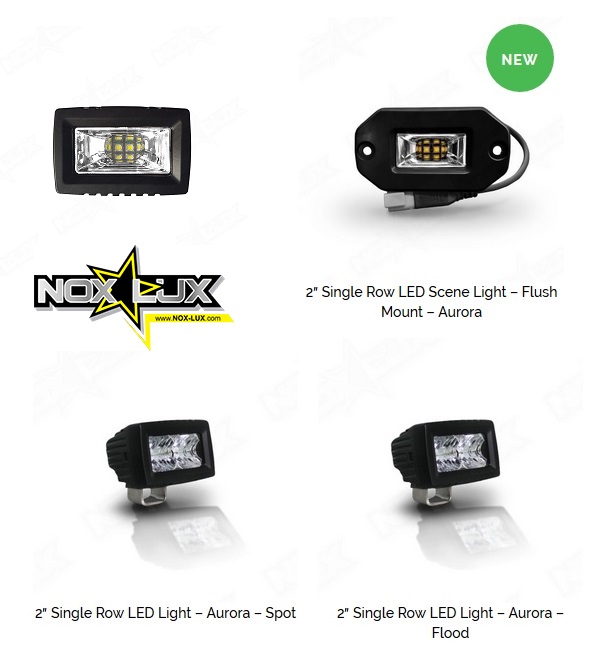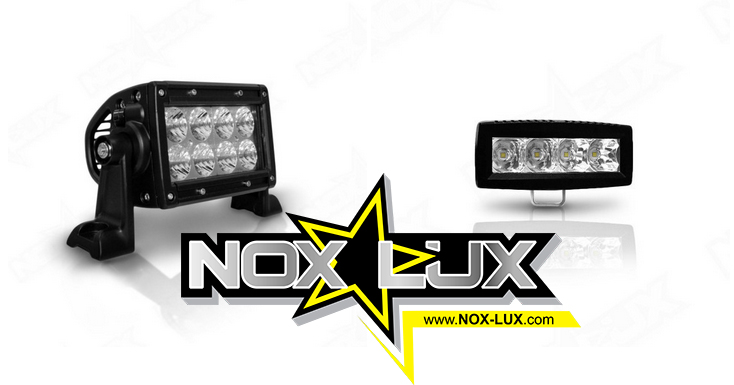Off-road LED Light Color Temperatures
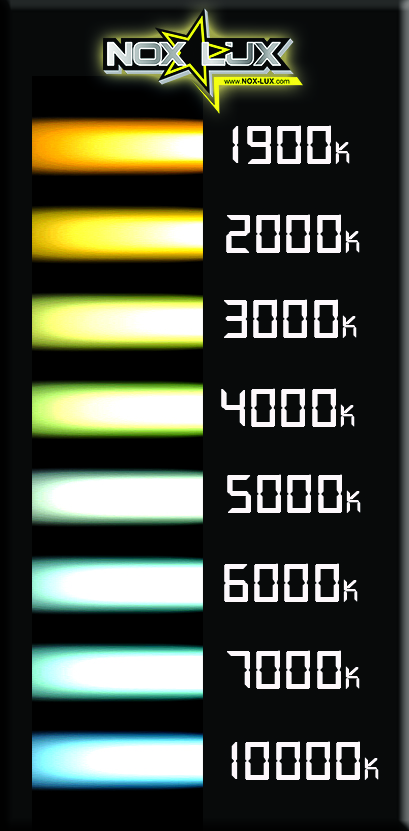
Did you know that automotive lights and off-road LED lights are manufactured in different color temperatures?
That’s right people, not all automotive, auxiliary, or off-road lights are created equal or with the same color temperature.
Now, we are not speaking in regards to RGB colors, we are speaking in regards to how warm or cool (yellow, white, or blue) a particular light beam is. The color temperature of an automobile’s lights are measured by the Correlated Color Temperature (CCT) scale, which is measured and expressed in Kelvin…
Read on to find out more…
The color temperature of a light source is defined by the temperature that radiates light of comparable color to that of the light source(if that makes any sense 😉 ) itself. Basically, color temperature is a characteristic of visible light. Color temperature is expressed in kelvins, using the symbol K, a unit of measure for absolute temperature.
For example, light bulbs are typically classified in 3 categories- Soft White bulbs are typically 2700k-3000k; Bright White bulbs are usually anywhere from 3000k – 4000k; Cool White Bulbs are usually measured from 5000k-6500k. According to Wikipedia, Color temperatures over 5000k are considered cool colors as they can appear to have a bluish tinge to the light beam, with lower color temperatures around 3000k or below being considered warmer colors as they appear to be yellowish to amber white in color. The word “warm” when speaking in regards to color temperature of a light, refers to the radiated heat flux signature versus that of the actual temperature of the light beam.
What is a Kelvin in lighting?
Kelvin in lighting is basically the unit of measurement used to quantify the actual color of a light source, not the heat being emitted from the light source itself. The scale for measuring the color of a light is called the correlated color temperature scale. This scale usually operates by means of imagining there was a black body object that basically gets heated up to a point to where the black bodied object will begin to glow. The most common example of this type of measuring with the CCT scale would be a light filament from a lamp being heated up by electricity, which in turn, makes the filament get hot and start to glow light. Amber to yellowish color lights are a lower number in terms of kelvin, the higher the kelvin the bluer the light will be.
Source: http://wikipedia.org/wiki/Color_temperature
Off-road LED Light Color Temperatures-
How is color temperature measured?
- Below 3000k- A light bulb that produces light perceived as amber to yellowish will have a color temperature of around 2700K-3000k. Extremely low color temperature kelvin lights are typically used where infra red spectrum lighting is needed.
- 3,000- amber- yellowish-white : When the lights color temperature is around 3000K – 3500K, the color of these types of lights appear to be a little less yellow, with a bit more white light being emitted.
- 3000k- 3600k lights are or used to be one of the most popular color temperatures for stock halogen or incandescent bulbs. These lights are close to the 3000K color of lights, but they have more of a mix of soft white light than that of the yellowish tint. This color temperature is typically what most people want to upgrade from as these color lights appear to be to dim with no light intensity, not to mention the aesthetic reasons of buying and installing the newer types of automotive lights.
- 4000k-4600k: As we start getting above 4000k we start to see the common color temperature of most stock off-road HID light systems. These lights are substantially whiter than that of 3000k-3600k but still have a minute tinge of bright yellow in the mix. If you are looking for that cool to bright whitish blueish color appearance, the 4300K-4600k lights would not be the best selection. You would have to find a light with a color temperature of around 6000k+ if you want to go with the newer modern look.
- 5000k: When the color temperature is 5000K-5600k and/or higher, the light produced ranges from cool to bright white color, sometimes with a light tinge of blue mixed in the light beam.
- 6000k: When you start getting into the 6000 kelvin range and above, you will notice that the color of this lighting appears to be a mix of bright white light and blue light. This color temperature is what you commonly see on newer vehicles that have bluish- whitish automotive lights. Depending on what manufacturer or retailer you purchase your automotive lights or off-road lights, the difference in color temperature can vary drastically, especially when you get into the 5000k + rated lights.
- 7000K- Once you start to get above the 6000K + range in terms of color temperature, you will start to notice that these types of automobile lights have more of a blueish tinge to the color of the light beam. Once again, the higher the kelvin rating, the bluer the light beam appears. The 7000k rated lighting systems are common where vivid lighting is needed. Some examples outside the automotive world of lighting, these types of lights would be commonly found and used in places such as jewelry stores, commercial buildings, museums, etc.
- 8000k: Even at 8000k the light appears to be in the color spectrum of lighter blue. These automotive lights are much bluer than the 6000k rated lights, but are still not in the vivid blue range.
- 10000k: 10,000k rated lights produce a dark blue light beam and are in fact, very close to violet in the spectrum(once again, this will depend largely on the light manufacturer). This high of a kelvin rating is uncommon in most automotive and off-roading lighting applications as these lights can actually decrease visibility substantially when driving at night.
- 12,000K: 12000k rated lights are closer to the color violet in terms of the color spectrum and is typically the max threshold for just about any type of on or off-road application. 12000k lights in the automotive world are usually used as purely decorative lighting for wheel wells or puddle lights, under body, used as DRL, and/or used as automotive accent lighting. These lights are NOT recommended as a substitute night time driving light.
- 20,000k-30,000k- This high of a kelvin rating is well into the UV spectrum in terms of color temperature and are hardly ever used in practical on and off-road applications. In some instances, 20000k-30000k rated lights are utilized on vehicles when and where ultra-violet lighting is needed.
Other colors of off-road LED lights-
Red, blue, green, orange, amber, purple, ultra violet, white, Infra-red
Other things to keep in mind when determining which color temperature would work best for you and your specific situation.
What type or brand of LED’s are the lights made with? EPISTAR, Phillips, OSRAM, CREE…? When purchasing your next set of off-road lights, make sure you find out which brand of LED’s are used within the off-road light. Most of the high end off-road LED light companies only use top bin, Grade A, CREE LED’s or OSRAM LED’s in the construction of their products. This is not to say that the other LED manufacturer’s products are not effective products, we are simply stating the facts. You will find out that almost all of the cheaper off-road LED light systems tend to use EPISTAR LED’s, Phillips LED’s, plus several other LED manufacturers.
Do you know what the color temperature of the LEDs are? The color temperature of most off-road LED lights are typically within the 5000k-6500k color temperature range. This is the optimum range of operating color temperature as this range is the closest to natural sun light at or around high noon. The closer the color temperature to that of natural lighting, the easier it will be for you to see without straining your eyes.
Do you know if the off-road light uses top of bin, Grade A, LED’s and chip sets? If you buy a LED light from a mainstream performance grade off-road LED light retailer, chances are you will be getting a much tighter variance in terms of the color temperature of the LEDs. Many of the cheap LED light manufacturers buy bottom of the bin, or second and thirds, not Grade A LED’s. When LED’s are purchased from the bottom of the bin, you will find that there is a much wider variance in terms of color temperature between each individual LED.
Most of the top shelf off-road LED light retailers claim to have a small variance within 1-300 kelvin with the LED’s they use to manufacture their off-road lights. This means they could have LED’s that are in the 5500 kelvin range, but in all reality, each LED could vary from 5200k-5800k. Cheap off-road LED light manufacturers variances are usually much wider in terms of variance spread when compared to top of the line off-road LED light manufacturers.
Make sure you check out our other articles in our series about the history of automotive, auxiliary, and off-road lights-
- The History of Automotive and Off-road Lights
- The Different Types of Off-road Lights
- Off-road Light Beam Configurations
Stand by for the 5th article in our automotive off-road light article series-> Off-road LED Light Components
Illuminate Your Next Excursion At the Speed of Light With Nox Lux’s Hyper Performance Off-road LED Lights!


